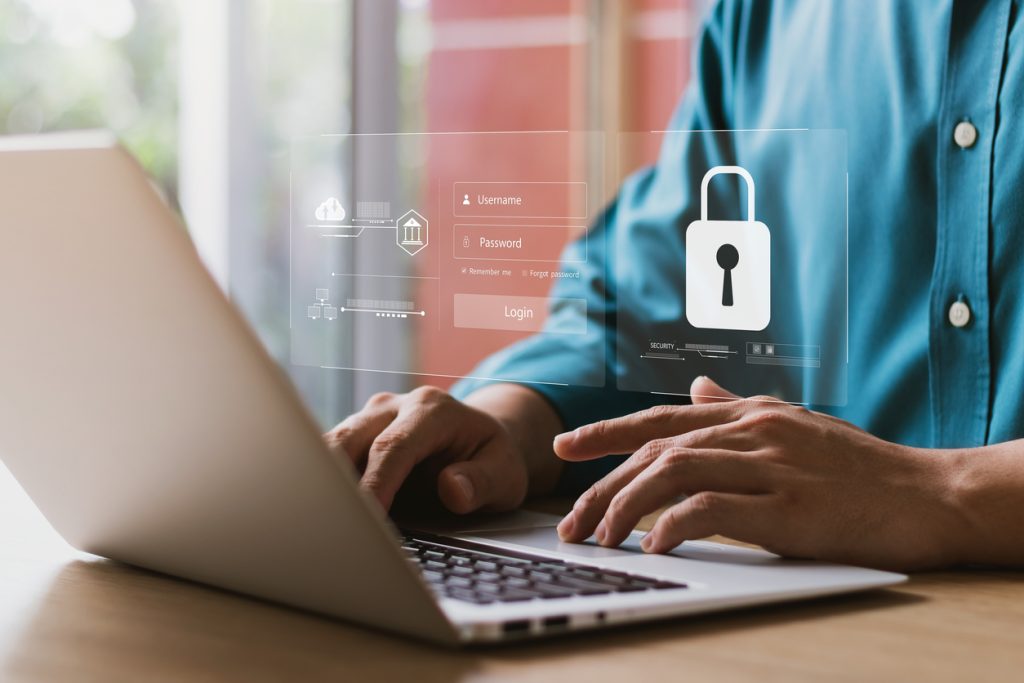
Imagine this: it’s a quiet Monday morning, and you’re sipping coffee at your small business’s office, a cozy bakery you’ve poured your heart into for years. Your online orders are booming, and your website’s humming along nicely. Then, out of nowhere, your system freezes. A menacing pop-up demands a ransom to unlock your data. Your customer records, financial details—everything—is at risk. This isn’t a hypothetical for many small business owners; it’s a reality that can cripple a business overnight. Cybersecurity isn’t just for tech giants—it’s a critical lifeline for small businesses like yours. In this guide, I’ll walk you through practical, actionable cybersecurity tips to safeguard your business, drawing from expert insights, real-world examples, and a sprinkle of personal lessons learned the hard way.
Why Cybersecurity Matters for Small Businesses
Small businesses are the backbone of the economy, but they’re also prime targets for cybercriminals. According to the U.S. Small Business Administration, small businesses account for 44% of U.S. economic activity, yet 43% of cyberattacks target them, per a 2023 Verizon report. Why? Because small businesses often lack the robust defenses of larger corporations, making them low-hanging fruit for hackers. A single breach can cost thousands in recovery, lost revenue, and damaged reputation. I learned this firsthand when a friend’s boutique retail store lost $10,000 to a phishing scam that could’ve been prevented with basic email filters. Cybersecurity isn’t just about tech—it’s about protecting your livelihood, your employees, and your customers’ trust.
Understanding the Cyber Threat Landscape
Before diving into solutions, let’s unpack the threats you’re up against. Cybercriminals aren’t always shadowy figures in hoodies; they’re often sophisticated networks exploiting vulnerabilities. Common threats include:
- Phishing Attacks: Emails or texts that trick you into sharing sensitive information. In 2024, phishing accounted for 36% of data breaches, per the Identity Theft Resource Center.
- Ransomware: Malware that locks your systems until you pay a ransom. The average ransom demand hit $1.62 million in 2024, according to Sophos.
- Data Breaches: Unauthorized access to customer or business data, often through weak passwords or unpatched software.
- DDoS Attacks: Overwhelming your website with traffic to shut it down, disrupting online sales.
Each threat exploits a different weakness, but the good news? You can address them with practical steps, even on a tight budget.
Building a Cybersecurity Foundation: Start Simple
You don’t need a tech degree to secure your business—just a commitment to the basics. Think of cybersecurity like locking your shop’s doors at night. Here are foundational steps to get started:
1. Strong Passwords and Multi-Factor Authentication (MFA)
Weak passwords are like leaving your front door wide open. A 2023 LastPass study found that 80% of data breaches involve compromised passwords. Use complex passwords (at least 12 characters, mixing letters, numbers, and symbols) and store them in a password manager like LastPass or 1Password. Even better, enable MFA wherever possible—think of it as a deadbolt on your digital doors. MFA requires a second verification step, like a text code or app notification. I once helped a florist set up MFA on her email, and it stopped a hacker who’d guessed her old password (“Flower123”).
- Actionable Tip: Audit your accounts (email, banking, website) and enable MFA today. Use a password manager to generate and store unique passwords for each account.
2. Keep Software Updated
Outdated software is a hacker’s playground. In 2024, 60% of breaches exploited unpatched vulnerabilities, per the Cybersecurity and Infrastructure Security Agency (CISA). Whether it’s your website’s content management system (like WordPress) or your point-of-sale software, updates patch security holes. Set a monthly reminder to check for updates, and enable automatic updates where possible.
- Actionable Tip: Create a calendar alert to review and update all software, including plugins and apps, on the first of each month.
3. Secure Your Wi-Fi Network
Your Wi-Fi is the gateway to your business’s data. An unsecured network is like leaving your safe’s combination taped to the wall. Use a strong, unique Wi-Fi password and enable WPA3 encryption (or WPA2 if WPA3 isn’t available). Hide your network’s SSID to make it less visible to outsiders. When I helped a coffee shop owner secure her Wi-Fi, we changed the default router password and hid the SSID, cutting down on unauthorized access attempts.
- Actionable Tip: Check your router’s admin settings (usually accessed via a browser) and update the password and encryption settings. Rename your network to something nondescript, like “Network123,” to avoid drawing attention.
Protecting Customer Data: Your Legal and Ethical Duty
Your customers trust you with their data—credit card numbers, addresses, emails. A breach doesn’t just hurt your wallet; it erodes that trust. Plus, regulations like the General Data Protection Regulation (GDPR) or the California Consumer Privacy Act (CCPA) can slap you with fines if you’re not compliant. Here’s how to protect customer data:
1. Use Secure Payment Systems
If you process payments online or in-store, use trusted providers like Stripe or Square, which comply with Payment Card Industry (PCI) standards. These platforms encrypt transactions, reducing your liability. A local gym I worked with switched to Stripe and avoided a costly breach when their old system was targeted.
- Actionable Tip: Verify that your payment processor is PCI-compliant and avoid storing customer credit card details manually.
2. Encrypt Sensitive Data
Encryption scrambles data so only authorized users can read it. Use HTTPS for your website (look for the padlock in the browser) and encrypt customer data stored on your systems. Tools like Let’s Encrypt offer free SSL certificates to secure your site.
- Actionable Tip: Check your website’s URL. If it’s “http” instead of “https,” contact your web host to install an SSL certificate.
3. Train Your Team
Your employees are your first line of defense—and sometimes your weakest link. A 2024 IBM Security report found that 95% of breaches involve human error, like clicking phishing links. Regular training can prevent this. Share real examples, like the time a café employee almost fell for a fake invoice email but caught it after a training session.
- Actionable Tip: Hold quarterly 15-minute training sessions on spotting phishing emails and safe internet practices. Use free resources from CISA’s Cybersecurity Awareness Program.
Advanced Cybersecurity Measures for Growth
Once you’ve nailed the basics, level up with these strategies to future-proof your business:
1. Back Up Your Data Regularly
Ransomware can lock you out, but backups are your safety net. Use the 3-2-1 rule: three copies of your data, on two different devices, with one stored offsite (like in the cloud). Tools like Backblaze offer affordable cloud backups for small businesses. A photographer I know saved her portfolio from a ransomware attack because she had daily cloud backups.
- Actionable Tip: Schedule automatic backups weekly and test restoring a file monthly to ensure your backups work.
2. Invest in Antivirus and Anti-Malware Software
Free antivirus programs are better than nothing, but paid solutions like Bitdefender or Norton offer robust protection against malware, ransomware, and phishing. They also include features like firewalls and real-time threat detection.
- Actionable Tip: Compare antivirus plans and choose one with small business features, like centralized management for multiple devices.
3. Monitor for Suspicious Activity
Use tools like intrusion detection systems or website monitoring to catch threats early. Services like Cloudflare can protect your website from DDoS attacks and alert you to suspicious traffic. A small e-commerce store I advised used Cloudflare to block a bot attack that was slowing their site.
- Actionable Tip: Set up free monitoring with Cloudflare’s basic plan or Google Analytics to track unusual website activity.
Comparison Table: Cybersecurity Tools for Small Businesses
| Tool | Key Features | Cost | Best For | Ease of Use |
|---|---|---|---|---|
| LastPass | Password management, MFA | Free tier; Premium $3/month | Password security | Beginner-friendly |
| Bitdefender | Antivirus, anti-malware, firewall | $60/year for 3 devices | Comprehensive protection | Moderate |
| Backblaze | Cloud backups, ransomware protection | $7/month per device | Data backups | Easy |
| Cloudflare | DDoS protection, website monitoring | Free tier; Pro $20/month | Website security | Moderate |
| Stripe | PCI-compliant payments, fraud detection | 2.9% + $0.30 per transaction | Payment processing | Easy |
This table compares popular cybersecurity tools based on features, cost, and usability, helping you choose the right fit for your budget and needs.
Common Cybersecurity Mistakes to Avoid
Even with the best intentions, small business owners can make costly mistakes. Here are pitfalls to watch out for:
- Ignoring Employee Training: Untrained staff are more likely to fall for scams. Regular refreshers are key.
- Using Free Wi-Fi for Business: Public Wi-Fi is a hacker’s paradise. Use a VPN if you must work remotely.
- Neglecting Mobile Security: If you or your team use phones for work, secure them with antivirus apps and remote wipe capabilities.
- Assuming You’re Too Small to Be Targeted: Hackers don’t discriminate—small businesses are often easier prey.
FAQ: Your Cybersecurity Questions Answered
Q: How much should I budget for cybersecurity?
A: It depends on your business size, but even $100–$300/year can cover essentials like antivirus, backups, and a password manager. Prioritize free tools like Let’s Encrypt and scale up as you grow.
Q: Can I handle cybersecurity myself, or do I need an expert?
A: Most small businesses can manage basic cybersecurity with the steps above. For complex needs (e.g., custom software), consider consulting a cybersecurity professional.
Q: What’s the first thing I should do after a breach?
A: Disconnect affected devices from the internet, notify your team, and contact a cybersecurity expert. Report the breach to authorities and inform customers if their data was compromised.
Q: Are free cybersecurity tools safe to use?
A: Many free tools, like Cloudflare’s basic plan or Let’s Encrypt, are reputable and safe. Always research the provider’s credibility before using.
Q: How often should I update my cybersecurity measures?
A: Review your setup quarterly, update software monthly, and train staff at least twice a year.
Conclusion: Your Cybersecurity Journey Starts Now
Cybersecurity isn’t a one-and-done task—it’s an ongoing commitment to protecting your business, your customers, and your peace of mind. The stakes are high: a single breach can cost you thousands, erode trust, and even shutter your doors. But the good news? You don’t need to be a tech wizard to make a difference. Start with the basics—strong passwords, MFA, updated software—and build from there. Invest in training, backups, and monitoring to stay one step ahead of cybercriminals. My friend’s bakery bounced back from that phishing scare by implementing these steps, and today, she’s thriving with a secure online presence.
Take a moment to audit your current setup. What’s one step you can take today—maybe enabling MFA or scheduling a backup? Cybersecurity is like insurance: you hope you’ll never need it, but when you do, you’ll be glad you invested the time. Your business is worth it.


